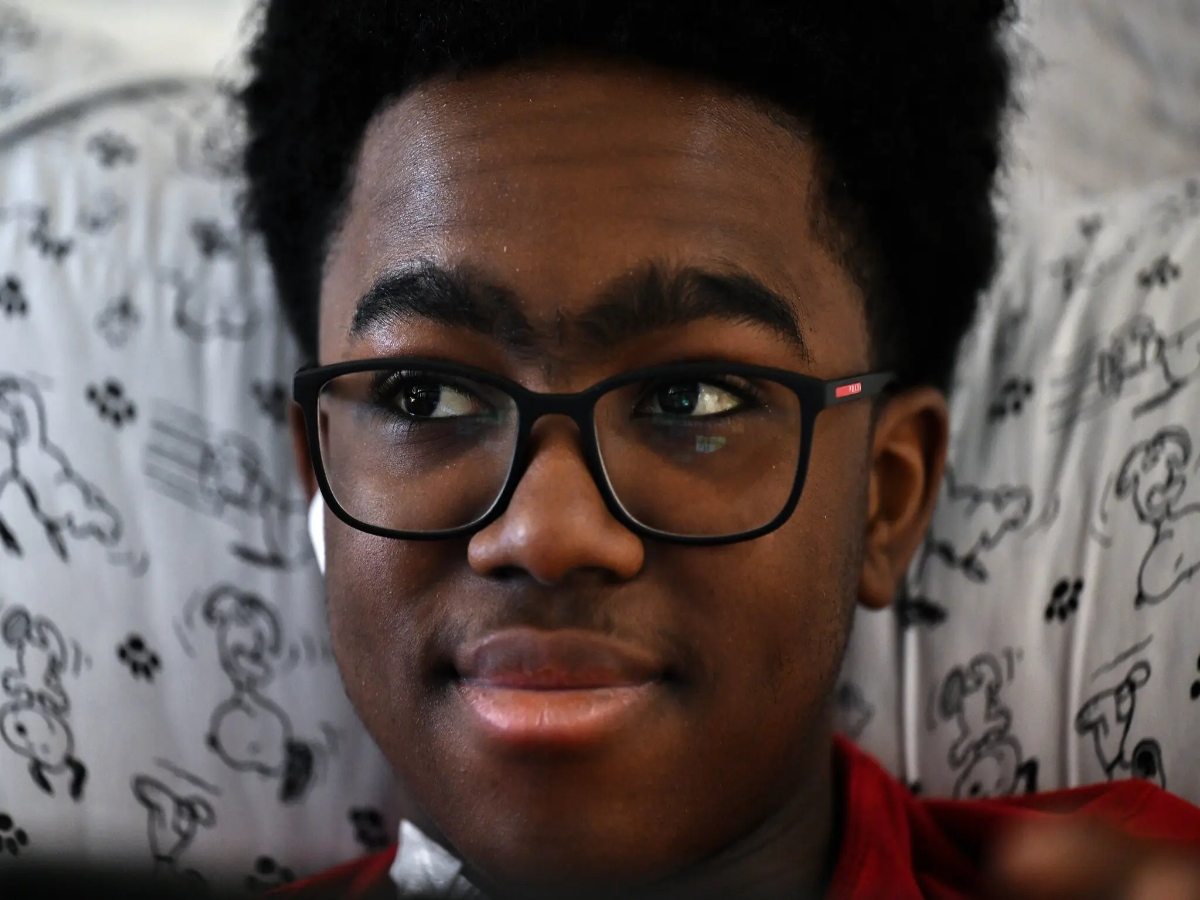After 44 days, Kendric Cromer, the world’s first sickle cell patient to start commercially licensed gene therapy, was finally discharged from the hospital last Wednesday. One study estimates that approximately 100,000 people in the United States suffer from sickle cell disease, with Black people making up a large percentage of those affected. ...Tap To Read The Full Story Here | ..Tap To Read The Full Story Here...
The 12-year-old Washington native can now picture a normal life. The staff of Children’s National Hospital lined the hallway, cheering and waving noisemakers as they celebrated his exit.
The Saturday night before leaving the hospital, he accomplished something that would have previously caused him pain and discomfort—dancing with his mother.
He told the New York Times, “I thought I would have sickle cell for the rest of my life.”
When his parents, Keith Cromer, a federal law enforcement officer, and Deborah Cromer, a realtor, learned during pregnancy that their unborn child would have a one in four chance of inheriting the mutated gene from each parent and developing sickle cell disease, they took a chance and chose not to abort the child.
Nonetheless, their son’s illness has been traumatic for the family, beginning with his first crisis at the age of three, when sickled blood cells became lodged in his legs and feet, leaving him in such much misery that Deborah was unable to touch him. This was the first of many hospital visits they would have.
Cromer’s pain crises, which could be triggered by anything from a short game of volleyball or basketball to a swim in a pool, grew so severe that he sometimes required five days to a week of hospital therapy to manage his agony. He had his parents’ unwavering support through it all.
Eventually, the condition began to cause serious damage. He suffered avascular necrosis in his hips, which is the destruction of bone caused by a lack of blood supply. The illness extended to his back and shoulders, requiring him to take massive doses of gabapentin, a nerve pain medication.
Fearing that playing with other children may hurt him, he soon distanced himself from his friends and spent more time watching anime or building Lego structures on his iPad.
In 2023, the Food and Drug Administration gave two organizations, Bluebird Bio and Vertex Pharmaceuticals, permission to sell gene therapy to people with sickle cell disease. Bluebird’s procedure costs $3.1 million while that of Vertex is $2.2 million.
Kendric’s parents were grateful for the opportunity and a potential treatment to their son’s suffering, and they were relieved when their insurance covered the treatment.
Some patients were interested in the highly costly treatment but Kendric was fortunate enough to go first, which ultimately depended on who was sickest and whose insurance paid. Every year, Children’s National can only take on roughly ten gene therapy patients.
Deborah previously told the outlet, “We always prayed this day would come,” adding, “We’re nervous reading through the consents and what he will have to go through.”
The youngster and his family endured a great deal of suffering despite their efforts to prepare for the potentially life-threatening procedure.
Kendric’s procedure began in May, with physicians extracting his bone marrow stem cells. Doctors sent his cells to a facility in New Jersey, where new, healthy hemoglobin genes were added to the cells. After a few months, his cells were returned. On September 3, Kendric was admitted to Children’s National for the last round of his treatment.
He began receiving intensive chemotherapy two days later to cleanse his bone marrow and create space for the repopulation of the treated cells. The medical staff estimated that he would need to stay in the hospital for around a month after his doctors reinfused the treated stem cells into his body.
Soon after, the chemotherapy’s side effects began to manifest, including mucositis, a severe inflammation that caused painful sores in his mouth and intestinal tract; a swollen tongue that made eating and speaking difficult; a burning pain that spread to his stomach; and a very uncommon side effect that caused his hands and feet to become hot and painful as though they had been burned, among other adverse effects.
His father, Keith, recounted, “I was watching him go through it and not able to do anything at all.”
The effects gradually receded, but Kendric is still not out of the woods. He will need to get re-immunized with childhood vaccines, attend bloodletting sessions every two to four weeks to remove the excess iron in his blood from the transfusions, and avoid crowds for several months while his immune system heals from the chemotherapy that left him with weakened defenses against infections, according to the outlet.
Kendric, who aspires to work as a geneticist, has hope for the future.
He observed, “I haven’t felt all the amazingness yet. But I am slowly starting to feel better.” His family is likewise optimistic and eager for him to face life’s obstacles as a healthy teen free of sickle cell disease. <..ALSO THE V-CLIP OF THE ARTICLE IS HERE..>
Kendric is Bluebird Bio’s first commercial patient, although the prior medication was beneficial to patients in clinical studies. Bluebird Bio is located in Somerville, Massachusetts. Due to the procedure’s demanding nature, Bluebird estimates that it can treat the cells of only 85 to 105 patients annually, including patients with sickle cell disease as well as those with beta-thalassemia, a rarer condition that can benefit from comparable gene therapy.👉 For More READ FULL CONTENT FROM THE SOURCE ↔️



